7 Fascinating Facts About the Xuzhou Han Tombs That Will Amaze History Buffs
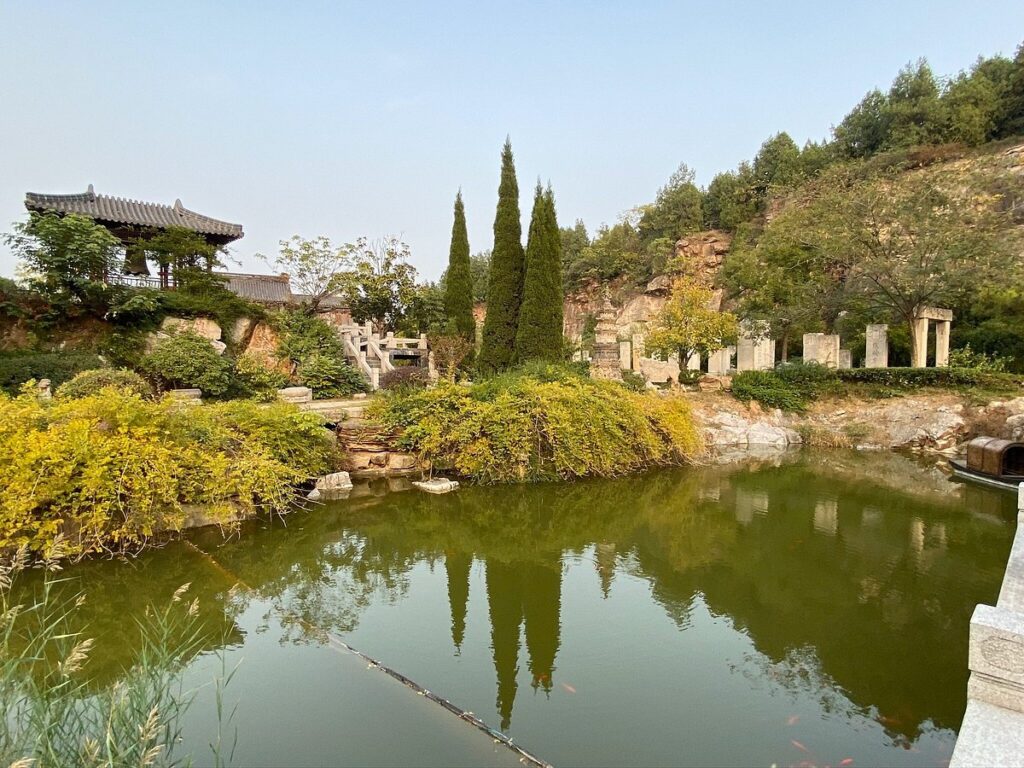
An Essential Guide to Visiting Xuzhou Han Tombs
Nestled within the serene landscapes of Xuzhou, the Han Tombs are a remarkable testament to ancient Chinese civilization and its rich history. What sets the Guishan Han Tombs apart from other historical sites is not just their age—dating back over 2,000 years—but rather the fascinating features that reveal the remarkable sophistication of their time. Imagine a tomb complete with kitchens, a drainage system, and stables for a horse-drawn chariot, all ingeniously carved into a natural stone hill. This is more than a burial ground; it’s a glimpse into the afterlife preparations of the Han dynasty’s royalty, echoing the grandeur of Egyptian pyramids.
In this guide, we will take you through the essential information for visiting the Xuzhou Han Tombs, including the best times to visit, highlights of the tombs and surrounding attractions, and tips for making the most of your experience. With insights into the artifacts on display and the fascinating stories behind the tombs, prepare to embark on a journey through time that captures the essence of China’s illustrious past. Whether you’re a history buff or simply looking to escape the bustling crowds found at more popular sites, the Xuzhou Han Tombs promise an intimate and enlightening adventure.
In This Guide
- An Essential Guide to Visiting Xuzhou Han Tombs
- The Rich History and Legends of Xuzhou Han Tombs
- Main Highlights: What You Absolutely Can’t Miss
- Planning Your Visit: A Practical Guide
- Tickets: Prices, Booking, and Tips
- How to Get There: A Complete Transportation Guide
- Local Cuisine and Accommodation Nearby
- Frequently Asked Questions
- Final Thoughts on Your Trip
The Rich History and Legends of Xuzhou Han Tombs
A Journey Through Time: The History of Xuzhou Han Tombs
Nestled in the heart of Xuzhou, the Han Tombs are a treasure trove of history, revealing the rich tapestry of life and death during the Han Dynasty (206 BCE – 220 CE). These ancient burial sites, particularly the Guishan Han Tombs, offer a glimpse into the customs, beliefs, and traditions of a civilization that laid the foundation for much of Chinese culture.
The Han Dynasty: A Golden Age
The Han Dynasty is often regarded as one of the golden ages of Chinese history. Following the tumultuous Qin Dynasty, which unified China, the Han dynasty expanded the empire’s borders, strengthened its economy, and developed a bureaucratic system that would influence future dynasties. This era saw advancements in technology, culture, and trade, including the establishment of the Silk Road, which facilitated cultural exchange with the West.
As the dynasty flourished, so did the practice of elaborate burial rituals. The Han emperors and noble families believed in an afterlife where material possessions, symbols of status, and even servants would accompany them. The Guishan Han Tombs, believed to be the resting place of the sixth King of Chu, Liu Zhu, exemplify this belief, showcasing a complex burial system complete with kitchens and a drainage system—remarkably sophisticated for its time.
The Discovery of the Tombs
The Guishan Han Tombs were rediscovered in the late 20th century and have since become a significant archaeological site. Excavations revealed not only the main burial chamber but also numerous artifacts that provide insight into the daily lives and funerary practices of the Han elite. Among the findings were exquisite pottery, bronze wares, and inscriptions that narrate the history of the tomb’s occupants.
These discoveries have enriched our understanding of the period and highlighted the importance of Xuzhou as a political and cultural hub during the Han Dynasty. With eight tombs of the Kings of Chu known to exist, each excavation adds another layer to the narrative of this influential dynasty.
Legends of the Han Tombs
As with any significant historical site, legends have sprung up around the Xuzhou Han Tombs, adding an air of mystique to their already intriguing history. One popular legend tells of the tomb’s construction, suggesting that it was designed with the assistance of divine beings who guided the architects to create a space that would ensure the king’s peaceful rest in the afterlife.
Another tale speaks of a hidden treasure within the tomb that could grant immense power to its finder. This legend has attracted treasure hunters and adventurers throughout the years, eager to uncover the secrets buried deep within the ancient stone hills. While the treasure remains elusive, the tombs themselves are filled with invaluable artifacts that tell the story of a bygone era.
A Remarkable Experience
Visiting the Guishan Han Tombs is not just a journey into the past; it is an opportunity to immerse oneself in the rich cultural heritage of China. The experience is enhanced by well-preserved artifacts, informative exhibitions, and lush gardens adorned with stone sculptures that complement the historic significance of the site.
As you wander through the tombs, you will find yourself captivated by the tales of emperors and queens, their lives intertwined with the very ground beneath your feet. The tombs serve as a reminder of the enduring legacy of the Han Dynasty, a remarkable period that continues to influence Chinese culture today.
In conclusion, the Xuzhou Han Tombs are not merely burial grounds; they are portals to a world of history, legend, and artistry that invites international travelers to explore the profound narratives that shaped ancient China.
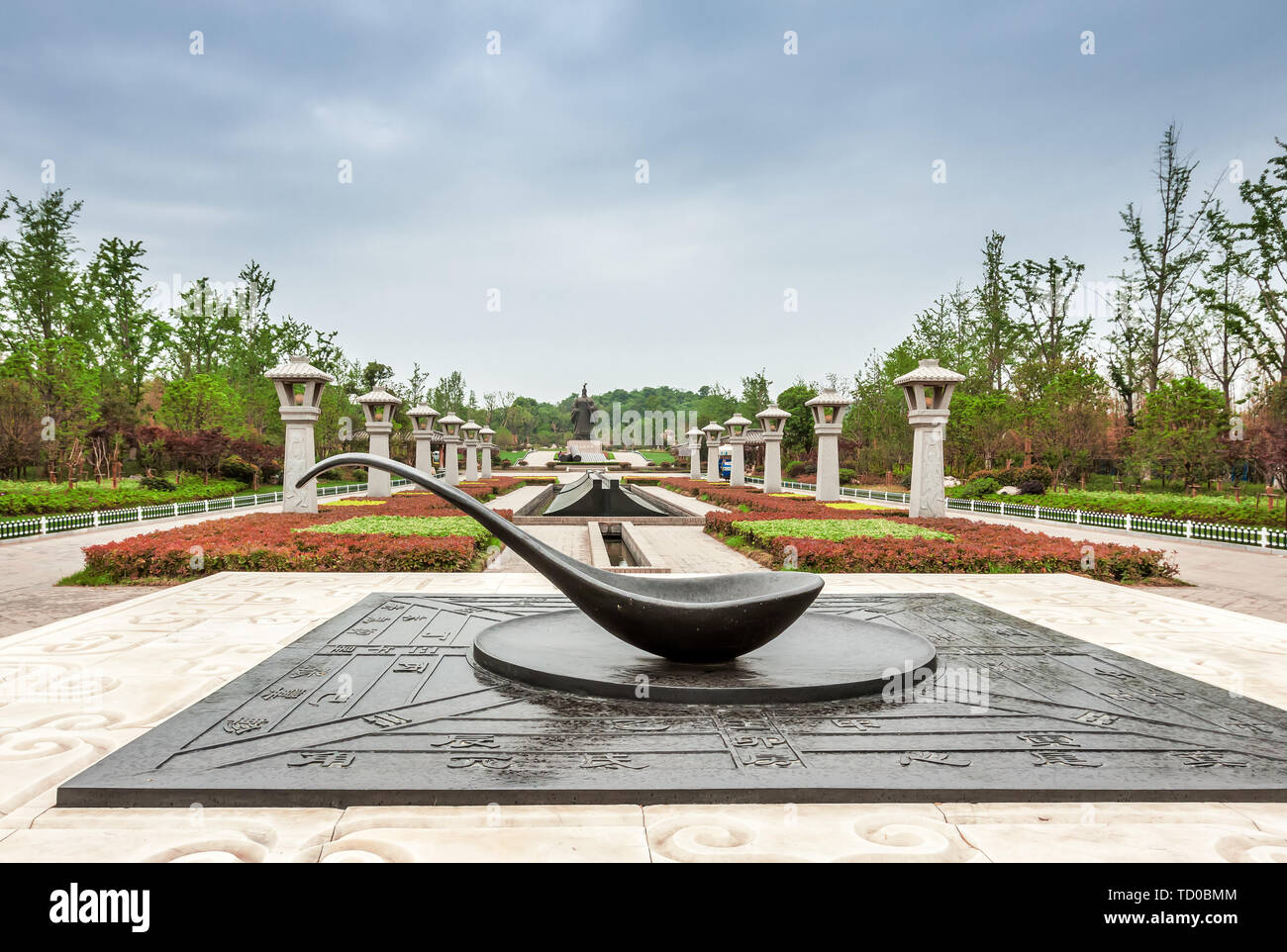
Xuzhou Han Tombs.
Main Highlights: What You Absolutely Can’t Miss
Guishan Han Tombs
As you wander through the Guishan Han Tombs, the tomb of Liu Zhu, the sixth King of Chu, stands out as a remarkable testament to ancient Chinese burial practices. Carved into a natural stone hill, this tomb is a marvel of engineering, complete with kitchens, a well, and even a drainage system that has withstood the test of time. Don’t miss the opportunity to explore this historic site, which offers insights into the daily life and afterlife beliefs of the Han Dynasty. Tip: Consider joining the audio tour available in English; it provides a wealth of information that enriches your visit.
The Queen’s Tomb
Adjacent to the main tomb is the burial site of the Queen, featuring a unique connection that allows visitors to traverse between the two tombs. This design not only signifies their bond in life but also in death. The layout is both intimate and grand, evoking a sense of reverence for the royal couple. Tip: A guided tour can enhance your understanding of the significance of this connection and the customs surrounding royal burials during the Han Dynasty.
Kitchen and Cooking Facilities
One of the tomb’s striking features is its remarkably preserved kitchen area, complete with ancient cooking facilities that hint at the importance of food in the afterlife. Here, you can see an actual toilet and cooking tools, which provide a fascinating glimpse into daily life 2,000 years ago. Tip: Look closely at the well, which still has water and serves as a testament to the ingenuity of ancient engineering.
The Garden of Stone Sculptures
Surrounding the tombs is a beautifully landscaped garden adorned with an array of stone sculptures that reflect the artistry of the Han era. Stroll through this serene space, where the intricate carvings tell their own stories of history and culture. Tip: Bring your camera! The garden offers numerous picturesque spots perfect for capturing memorable photos.
The Museum of Imperial Edicts
Your ticket to the Guishan Han Tombs also grants you access to the nearby Museum of Imperial Edicts. This museum showcases artifacts from the Han Dynasty, providing context and depth to your understanding of the era. Marvel at the intricacies of the edicts and the governance of the time. Tip: Allocate at least an hour to fully enjoy the exhibits without feeling rushed.
The Drainage System
An architectural marvel of its time, the drainage system within the tomb highlights the advanced engineering skills of the Han Dynasty. As you explore, pay close attention to how water management was integrated into the tomb’s design. Tip: Ask your guide about the specific functions of the drainage system to appreciate its ingenuity further.
Audio Guides and Accessibility
To enhance your experience, audio guides are available in English and are highly recommended. These guides provide detailed insights that can make your visit to the tombs feel like a journey back in time. Tip: Arrive early to secure your audio guide and avoid crowds, allowing you to soak in the history at your own pace.
These highlights at the Xuzhou Han Tombs offer a rare glimpse into the past, blending history, culture, and stunning architecture. It’s a destination that promises both enlightenment and a sense of wonder.
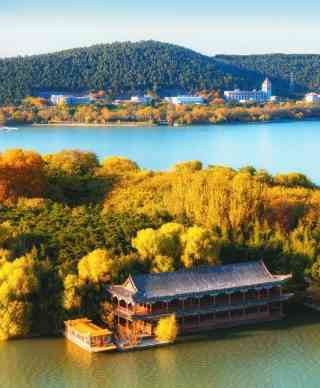
Xuzhou Han Tombs.
Planning Your Visit: A Practical Guide
Best Time to Visit
The Xuzhou Han Tombs are a captivating site year-round, but for the best experience, consider visiting in the spring (April to June) or autumn (September to November). During these months, the weather is mild, making it comfortable for walking and exploring the area. Additionally, these periods typically see fewer tourists, allowing for a more peaceful visit. If you’re looking to avoid crowds altogether, weekdays are generally less busy compared to weekends.
Recommended Itinerary
Morning:
– Start your day early to make the most of your visit. Arrive at the Guishan Han Tombs around 8:00 AM when they open.
– Take the audio tour available in English, which offers in-depth insights into the tombs’ history and significance. Allocate about an hour for this.
Midday:
– After exploring the tombs, stroll through the beautiful garden featuring stone sculptures. This area provides a serene atmosphere for reflection and photography.
– For lunch, consider nearby local eateries to savor authentic Chinese cuisine.
Afternoon:
– Visit the museum exhibit on Imperial Edicts, which is included in your ticket. Spend an hour or so here to gain a deeper understanding of the region’s history.
– If time permits, explore the nearby attractions like the Xuzhou Museum or the Imperial Edict Hall.
Photography Tips
- Lighting: The best times for photography are during the golden hour—shortly after sunrise or before sunset—when the light is soft and warm.
- Angles: Capture the grandeur of the tombs from different angles to highlight their architectural details. Wide-angle shots can also help encompass the beautiful garden and surrounding landscape.
- Details: Don’t forget to zoom in on unique features like the intricate carvings and artifacts within the museum, as these tell a story of their own.
What to Wear
- Comfortable Footwear: Since you’ll be walking and possibly navigating tight spaces within the tomb, wear sturdy and comfortable shoes.
- Weather-Appropriate Clothing: Check the weather forecast before your visit. In warmer months, lightweight clothing will keep you cool, while in cooler months, layering is advisable.
- Respectful Attire: As a historical and cultural site, opt for modest clothing that respects the local customs.
Insider Tips
-
Get a Guide: While audio tours are informative, having a local guide can provide you with deeper insights and anecdotes that aren’t covered in the audio. Look for guides who can tailor the experience to your interests.
-
Plan for Other Attractions: The Han Tombs are located near other interesting sites, such as the Xuzhou Museum and Yunlong Lake. Consider extending your visit to explore these nearby attractions for a fuller experience.
-
Visit Early or Late: To fully appreciate the tranquil atmosphere of the tombs, aim to visit early in the morning or later in the afternoon when the crowds are thinner.
-
Bring Water and Snacks: There are limited facilities within the tomb grounds, so it’s a good idea to carry water and light snacks to keep yourself refreshed during your visit.
-
Engage with Displays: Take your time with the displays in the museum. Reading the explanations and looking closely at the artifacts can enrich your understanding of the Han Dynasty’s rich history.
With this guide in hand, you’re all set for an enriching experience at the Xuzhou Han Tombs, where history comes alive amidst ancient relics and serene gardens. Enjoy your journey into the past!
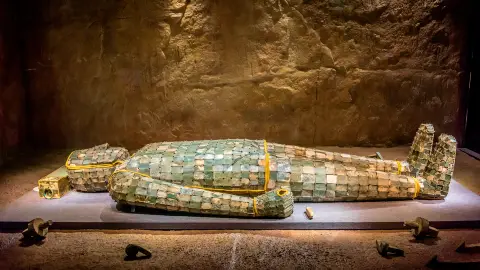
Xuzhou Han Tombs.
Tickets: Prices, Booking, and Tips
Visiting the Xuzhou Han Tombs is a fascinating journey into ancient history, offering a glimpse into the burial practices and cultural significance of the Han Dynasty. Before you embark on this adventure, it’s essential to know the details about tickets, pricing, and booking tips to ensure a smooth experience.
Ticket Information
| Ticket Type | Price (CNY) | Includes |
|---|---|---|
| Adult Admission | 80 | Access to the Guishan Han Tombs, museum exhibits, and the garden with stone sculptures. |
| Student Admission | 40 | Same as above (valid student ID required). |
| Group Admission | 60 (per person, min 10 people) | Same as above (advance booking required). |
Booking Tips
-
Advance Booking: It is highly recommended to book your tickets in advance, especially during peak tourist seasons or weekends. This helps you avoid long waiting times and ensures your entry to the site. Tickets can typically be booked through local travel agencies, online platforms, or directly at the site.
-
Tour Guides: Consider hiring a local guide for a more enriching experience. A knowledgeable guide can provide insights into the history and significance of the tombs and artifacts, making your visit much more rewarding.
-
Audio Tours: For those who prefer exploring at their own pace, audio tours in English are available. These tours are informative and comparable to some of the world’s most renowned historical sites.
-
Transportation: The Xuzhou Han Tombs are accessible by public transportation. However, if you’re unfamiliar with the local bus system, a guided tour may also include transportation, making it easier to navigate the area.
-
Timing Your Visit: The site is open daily from 8:00 AM to 7:00 PM. To avoid crowds, consider visiting early in the morning or later in the afternoon.
By keeping these points in mind, you can ensure a seamless visit to the Xuzhou Han Tombs and make the most of your exploration of this remarkable historical site. Enjoy your journey into the past!
How to Get There: A Complete Transportation Guide
Journey to the Xuzhou Han Tombs
Visiting the Xuzhou Han Tombs (徐州汉墓) offers a unique glimpse into ancient Chinese history, set against the backdrop of a less-traveled yet fascinating destination. Here’s your complete transportation guide to ensure a smooth journey to these remarkable tombs.
From the Nearest Major City
Arriving in Xuzhou
The primary gateway to Xuzhou is through its railway station, which connects the city to major hubs across China, including Beijing, Shanghai, and Nanjing.
- By Train:
- High-Speed Rail: The fastest option is to take a high-speed train from major cities like Beijing or Shanghai.
- Beijing to Xuzhou: Approximately 4 hours; cost around 550-750 CNY ($80-110).
- Shanghai to Xuzhou: Approximately 3.5 hours; cost around 360-500 CNY ($50-70).
-
Regular Train: Slower but cheaper options are also available, with travel times varying from 6-10 hours depending on service.
-
By Bus:
Long-distance buses are available from nearby cities, though they are less popular for international travelers. Buses from Nanjing, for instance, take about 4-5 hours and cost around 150 CNY ($22). -
By Car:
If you prefer to drive, Xuzhou is accessible via several highways: - From Nanjing: About 3 hours, roughly 250 kilometers (155 miles).
- From Shanghai: Around 5-6 hours, approximately 600 kilometers (370 miles).
Getting to the Tombs
Once you’ve arrived in Xuzhou, the Xuzhou Han Tombs are located in the Jiuli District, about 10 kilometers from the city center.
- By Public Transport:
- City Bus: Take Bus No. 25 or 33 from the city center to the Guishan Han Tombs. The journey takes about 30-40 minutes and costs around 2 CNY ($0.30). Be mindful that bus stops and announcements are primarily in Chinese, so having a translation app may be helpful.
-
Taxi or Ride-Hailing Service: A taxi from the city center to the tombs will take approximately 20 minutes and cost around 30-50 CNY ($5-8). Ride-hailing apps like Didi are widely used and provide an easy alternative for international travelers.
-
Tour Services:
Many local tour operators offer guided tours that include transportation to the Xuzhou Han Tombs, which can be a convenient option if you prefer a structured visit and English-speaking guides.
Getting Around the Scenic Area
The Xuzhou Han Tombs site is compact and can be explored comfortably on foot. Here’s how to navigate the area:
-
On Foot:
The tombs are situated in a park-like setting, with pathways leading to the tombs, gardens, and museum exhibits. Plan to allocate about 1-2 hours for your visit to fully appreciate the site, depending on your interest in the exhibits. -
Audio Guides:
Audio guides in English are available for rent at the entrance, providing rich historical context as you explore the tombs and surrounding areas. -
Nearby Attractions:
After visiting the tombs, consider exploring nearby attractions like the Xuzhou Museum and the beautiful garden featuring stone sculptures. These are within walking distance and can enhance your cultural experience.
Conclusion
The journey to the Xuzhou Han Tombs is straightforward, with several transportation options available from major cities. Once in Xuzhou, local buses, taxis, and guided tours make it easy to reach the tombs and explore the scenic area. With this guide in hand, you’re ready to step back in time and discover the ancient history of this remarkable site!
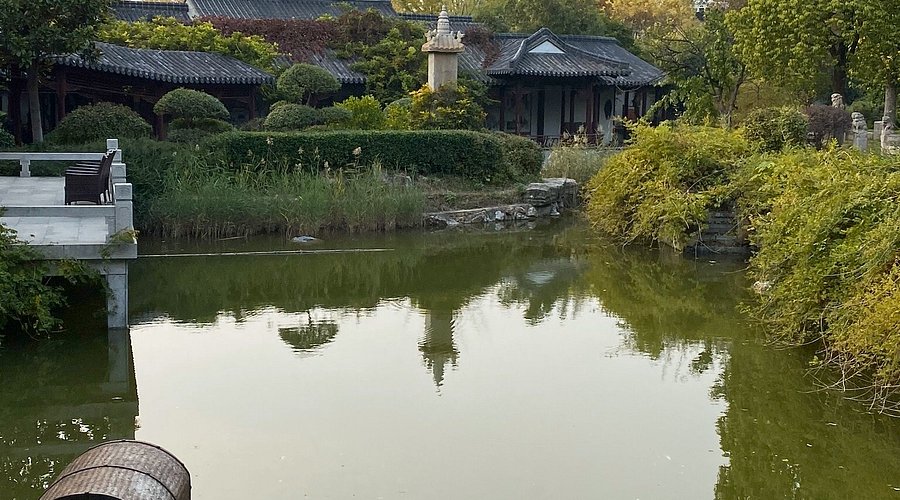
Xuzhou Han Tombs.
Local Cuisine and Accommodation Nearby
When visiting the Xuzhou Han Tombs, not only will you uncover the rich history of ancient China, but you’ll also have the chance to indulge in delicious local cuisine and find comfortable accommodation nearby. Here’s a guide to some culinary delights and lodging options that will enhance your travel experience.
Local Cuisine
-
Xuzhou Fried Rice (徐州炒饭)
A beloved staple in Xuzhou, this fried rice dish is typically cooked with a medley of vegetables, egg, and your choice of meat, such as chicken or pork. It’s seasoned with soy sauce and garnished with spring onions, making it a flavorful yet simple meal perfect for a quick lunch before or after your visit to the tombs. -
Steamed Buns (包子)
Known for their fluffy texture and savory fillings, these steamed buns come in various flavors, including pork, vegetable, and even sweet varieties. They make for a delightful snack as you explore the area, and you can often find them sold by street vendors or in local eateries. -
Braised Pork (红烧肉)
This dish features tender chunks of pork belly slow-cooked in a rich soy sauce and sugar mixture, resulting in a sweet and savory flavor profile. It’s typically served with rice and a side of vegetables, providing a hearty meal that showcases the region’s culinary traditions. -
Xuzhou Noodles (徐州面条)
Another local favorite, these hand-pulled noodles are often served in a savory broth with an assortment of toppings such as sliced beef, cilantro, and chili oil. The chewy texture of the noodles paired with the aromatic broth makes for a comforting dish, particularly after a day of exploring.
Accommodation Options
Luxury: Kempinski Hotel Xuzhou
Located just a short drive from the Xuzhou Han Tombs, Kempinski Hotel offers a luxurious stay with modern amenities. Guests can enjoy spacious rooms, a spa, and exquisite dining options, including authentic Chinese cuisine. The hotel’s elegant atmosphere and top-notch service make it a perfect choice for travelers seeking comfort and sophistication.
Boutique: Xuzhou Garden Hotel
This charming boutique hotel combines traditional aesthetics with modern conveniences. Featuring beautifully decorated rooms and a serene garden setting, it provides a peaceful retreat after a day of sightseeing. The on-site restaurant serves a selection of local dishes, ensuring you can continue to indulge in Xuzhou’s culinary delights.
Budget: Home Inn Plus Xuzhou
For budget-conscious travelers, Home Inn Plus offers clean and comfortable accommodations at an affordable price. Located conveniently near public transport, it allows easy access to the Xuzhou Han Tombs and other attractions. Despite its budget-friendly rates, the hotel provides essential amenities and a warm atmosphere.
Whether you’re looking to savor local dishes or find the perfect place to rest your head, Xuzhou has options that cater to every taste and budget. Enjoy your culinary and cultural journey through this fascinating region of China!
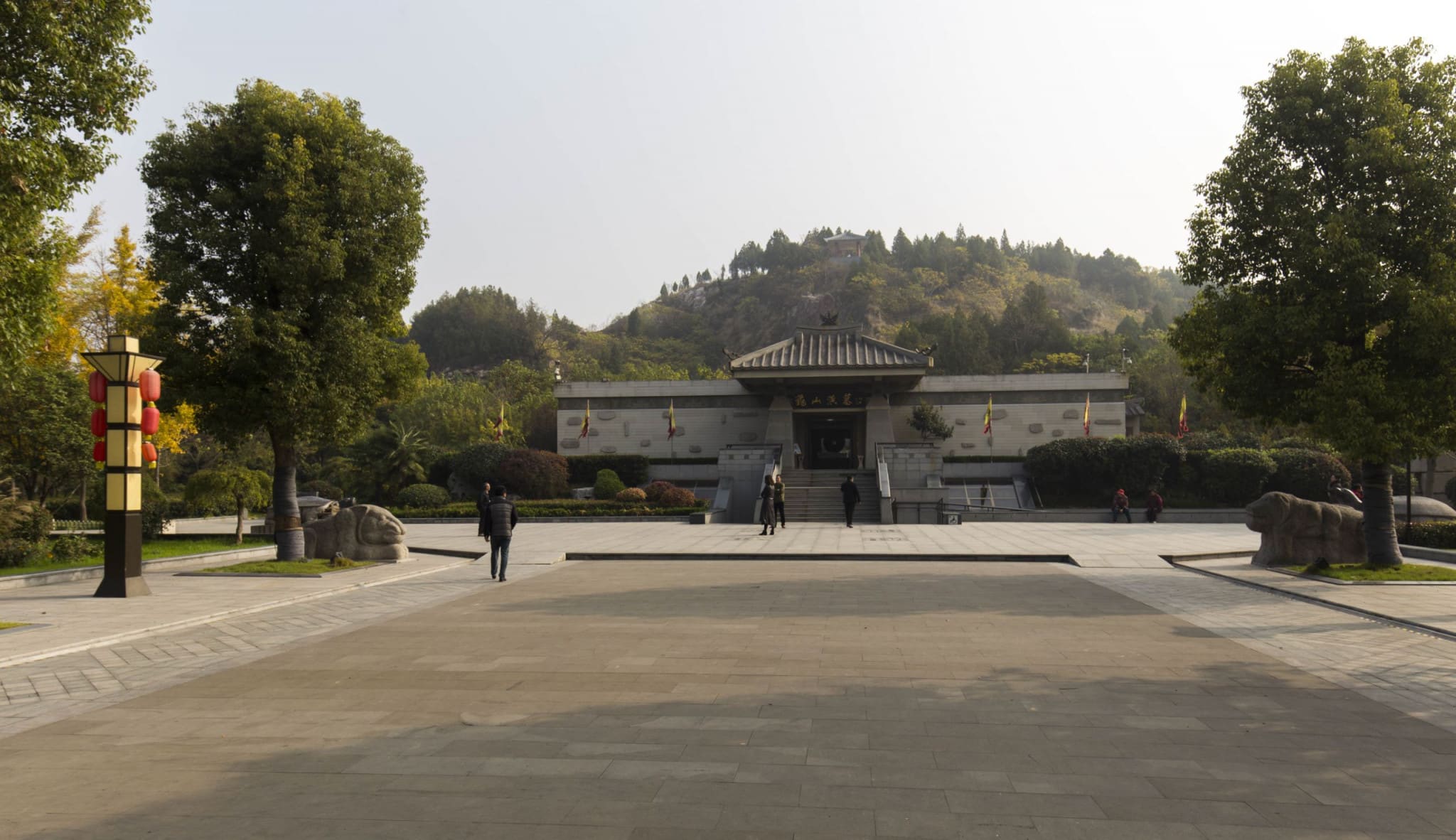
Xuzhou Han Tombs.
Frequently Asked Questions
Frequently Asked Questions about Xuzhou Han Tombs
-
Is the site suitable for children and the elderly?
Yes, the Xuzhou Han Tombs are suitable for both children and the elderly. The site has well-maintained paths, and while some areas may feel a bit confined, the overall experience is manageable for visitors of all ages. However, it’s advisable to assist elderly visitors who may have mobility issues. -
Are there English signs and audio guides available?
Absolutely! The site provides English-language audio guides that offer comprehensive information about the tombs and their historical significance. Additionally, many signs are available in English, making it easier for international travelers to navigate and understand the exhibits. -
How long should I plan to spend at the tombs?
A visit to the Xuzhou Han Tombs typically takes about one hour, allowing you to explore the tomb and the surrounding exhibitions at a leisurely pace. If you wish to visit the nearby museum and gardens, it’s advisable to allocate around two hours in total. -
What are the opening hours?
The Xuzhou Han Tombs are open every day from 8:00 AM to 7:00 PM. It’s best to arrive earlier in the day to avoid larger crowds and to have ample time to explore the site. -
Is there an entry fee?
Yes, there is an entry fee for the Xuzhou Han Tombs, which typically includes access to the tombs, museum exhibits, and the garden. It’s a good idea to check the official site or local resources for the latest ticket prices and any potential discounts. -
Are food and drinks available on-site?
There are limited food and drink options available near the tombs. Visitors are encouraged to bring water and snacks, especially if you plan to spend a bit more time exploring the area. -
How do I get to the Xuzhou Han Tombs?
The tombs are located in the Jiuli District, and you can reach them via public transportation, such as city buses or taxis. Be sure to have the address written in Chinese to show to drivers if needed. For those unfamiliar with the bus system, consider using a ride-hailing app for convenience. -
Is photography allowed?
Yes, photography is permitted at the Xuzhou Han Tombs; however, visitors are advised to be respectful and avoid using flash in confined spaces. Capture the stunning architecture and artifacts while being mindful of other guests and the preservation of the site.
Final Thoughts on Your Trip
As you conclude your journey through the Xuzhou Han Tombs, you’ll carry with you not only the echoes of ancient history but also a deeper appreciation for the cultural richness that China has to offer. The Guishan Tomb, with its remarkable preservation and intriguing artifacts, invites you to step back in time and witness the grandeur of the Han Dynasty. The thoughtful design of the tombs, complete with kitchens and drainage systems, provides a fascinating glimpse into the lives of those who once ruled.
Beyond the tombs themselves, the surrounding gardens and museum exhibits enhance your experience, allowing for a peaceful and contemplative visit away from the crowds. Whether you’re an avid history buff or simply seeking a unique travel experience, the Xuzhou Han Tombs promise to leave you inspired.
So take a moment to reflect on the stories etched in stone and the legacy of the Kings of Chu. As you step away from this historical site, let the whispers of the past resonate within you, encouraging a spirit of exploration and discovery in all your future travels. Embrace the journey ahead, knowing that every destination holds the promise of new stories waiting to be uncovered.